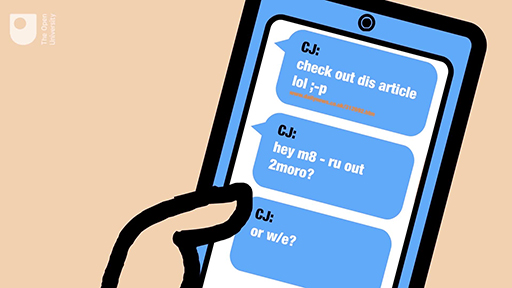Writing
Introduction

Transcript
Writing has changed a lot already during this century. For many people, what they write, how they write and where they write are completely different from a decade or two ago. Shopping lists are no longer scribbled on bits of scruffy paper; they are tapped into the Notes app on our phones. The work Christmas party is no longer organised by memo but by email. Fewer people write their thoughts in a diary; they now tend to tweet or blog or post online in another way.
A lot of this writing is now short, quick and informal, and therefore expectations around being accurate all the time have changed. For example, ’hi m8 omg last nite’ is perfectly acceptable in a text message now. It has no capital letter, no full stop, no other punctuation, an acronym, a number to rhyme with ate and night misspelled. In the past you would not have considered writing this in a note to a friend for a second.
These changes do present a challenge. The need for complete accuracy all the time may no longer apply to modern daily writing, but the rules for written English have not changed. Being clever with English to fit 280 characters is a real skill, but if you cannot also write for other, more formal, situations you have a problem.
If you know the rules and can both follow those rules when you need to and break them when you want to, you have the tools for modern writing.
In this session you look at the key parts of writing that you need to know about and use to be able to write appropriately and accurately whatever the text or situation.
